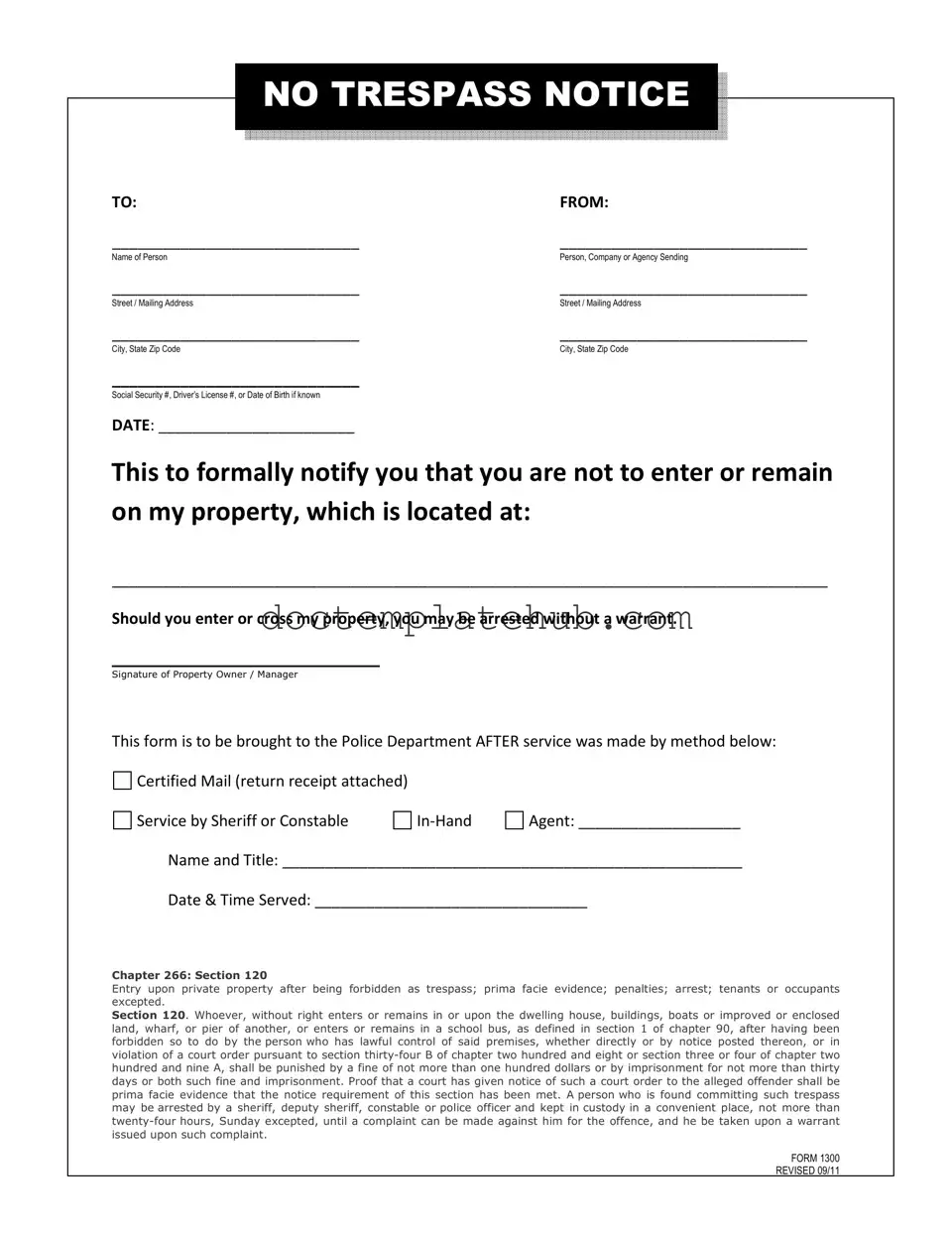What is a No Trespassing Letter?
A No Trespassing Letter is a formal document that notifies individuals that they are not allowed to enter or remain on a specific property. It serves as a clear warning and can help property owners protect their rights. By issuing this letter, you establish a record that can be important if legal action becomes necessary in the future.
Why would I need to use a No Trespassing Letter?
If you are experiencing issues with unwanted visitors or trespassers on your property, a No Trespassing Letter can be a crucial first step. It communicates your boundaries and intentions clearly. This letter can deter individuals from entering your property without permission and provides you with legal recourse should they ignore your request.
How do I fill out the No Trespassing Letter form?
To fill out the form, you will need to provide specific details. Start by entering your name and address as the property owner. Then, include the name of the individual you are addressing the letter to. Clearly state your property address and the date you are sending the letter. Finally, make sure to sign the document to validate it.
What methods can I use to deliver the No Trespassing Letter?
You have several options for delivering the letter. The most common methods include sending it via certified mail with a return receipt, serving it through a sheriff or constable, or delivering it in person. Each method has its advantages, but certified mail provides proof of delivery, which can be useful if further action is needed.
What happens if someone ignores the No Trespassing Letter?
If someone disregards your No Trespassing Letter and enters your property, you have the right to contact law enforcement. The letter serves as a legal notice, and you may be able to have the individual arrested for trespassing. It’s important to keep a copy of the letter and any evidence of delivery to support your case.
Can a No Trespassing Letter be revoked?
Yes, a No Trespassing Letter can be revoked at any time. If you decide to allow someone access to your property after issuing the letter, it is advisable to communicate this change clearly. A written revocation can help prevent misunderstandings and provide a record of your intentions.
Is a No Trespassing Letter legally binding?
While a No Trespassing Letter is not a legal contract, it does have legal implications. It establishes your intent to restrict access to your property. If someone violates this notice, you may have grounds for legal action. Always consult with a legal professional if you are unsure about your rights or the effectiveness of the letter.
